Search the Site
Discussion # 146: Not all that appears to be "behind the vertical" actually is! (Current freebie!)
Mention the term "behind the vertical," and most people will immediately think about that straight line from the horse's poll to the ground, and whether the horse is on that line or behind it. This horse, for example, is exactly on the vertical line to the ground: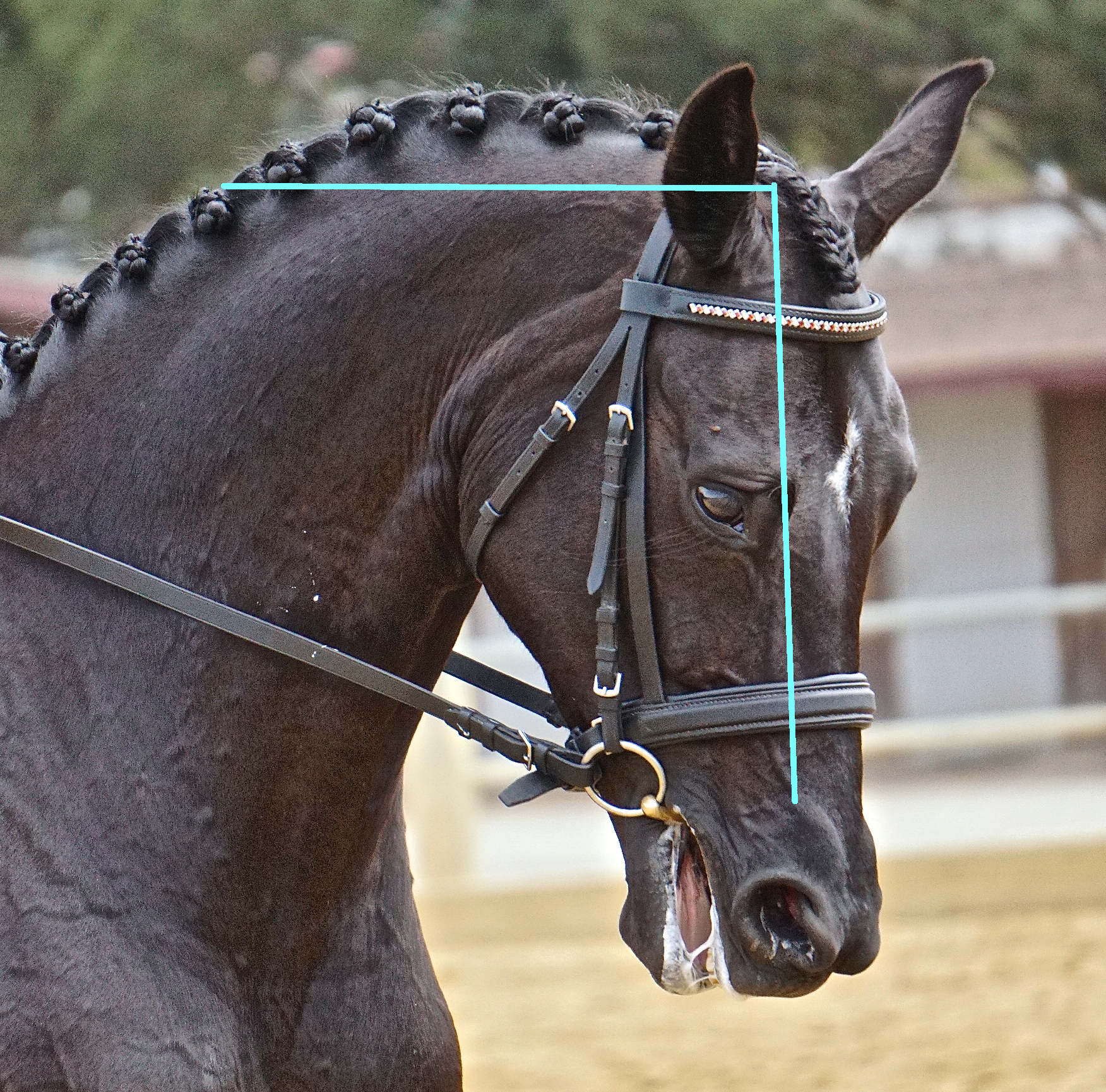
(Note - this photo is NOT being used as a perfect example of what a good connection should look like. It is only showing us what a true vertical line to the ground looks like.)
However, you can ONLY use that line vertical to the ground as a guideline if the horse is in a frame similar to the horse in this photo, with the poll being generally the highest point of the neck!
In order to correctly judge the horse that is stretching downwards with a low neck, you need to look at the angle created at the poll, and whether or not the horse is closed in the throatlatch area. I have drawn on some pictures to show you what I mean: 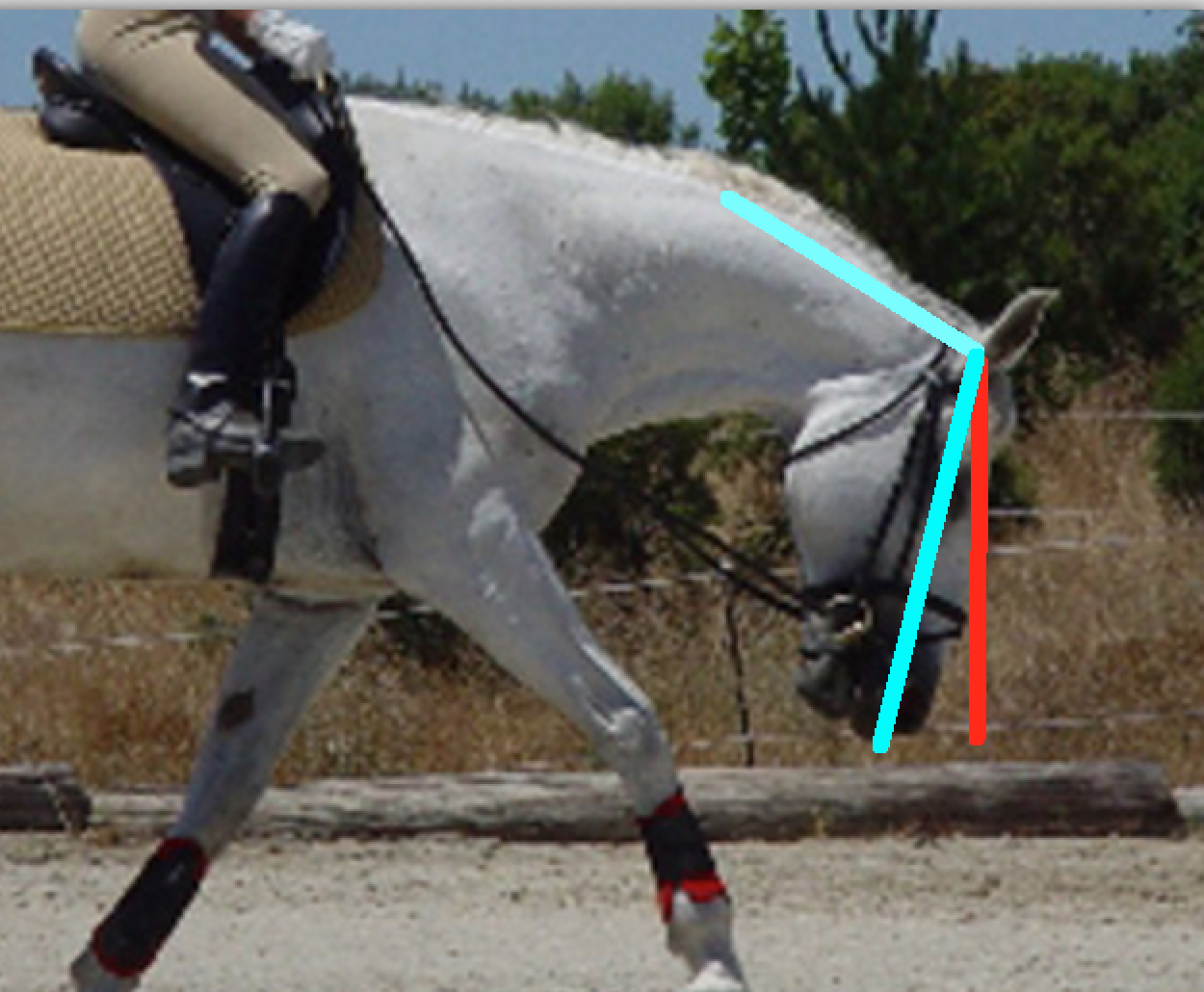
The red line that represents vertical in relation to the ground is not the line that we use to judge whether or not this horse is behind the vertical. We have to look at the angle made by the two intersecting turquoise lines. If that is 90 degrees, than the horse is on the vertical for our purposes, and if it is greater than 90 degrees (as this one is) the horse is ahead of the vertical.
So the horse can still be forward, down, and out when his nose is behind that red line. This is such a misunderstood topic, as many seem to condemn any horse that goes behind that red line, and are not looking at the whole picture. The lower the horse's neck, the more likely he is to be behind that red line, even if he is truly stretching to the bit.
Would it be even better yet, if the horse was closer to that red line?? Maybe, but not always. As long as they can stay correctly connected over the back it can be good to push for that red line. Some horses will never get there with a very low neck because of the way they are built. And many that do go to that red line when very low with their necks are just strung out, and on the forehand.
Here is another example: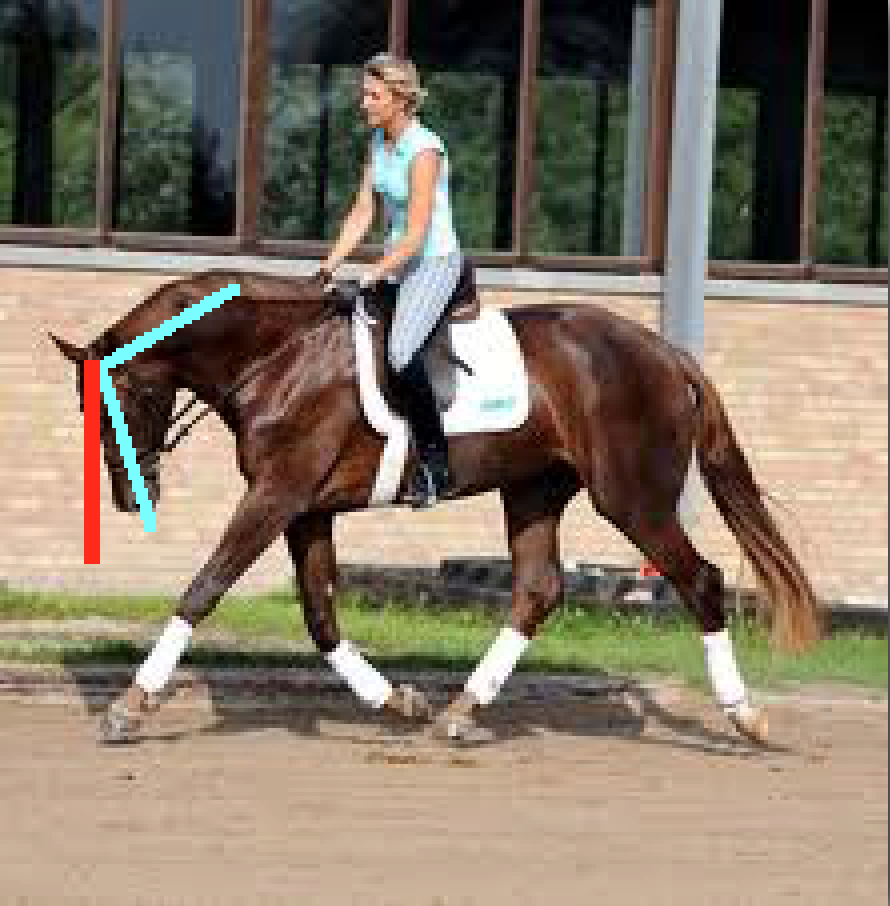
And another: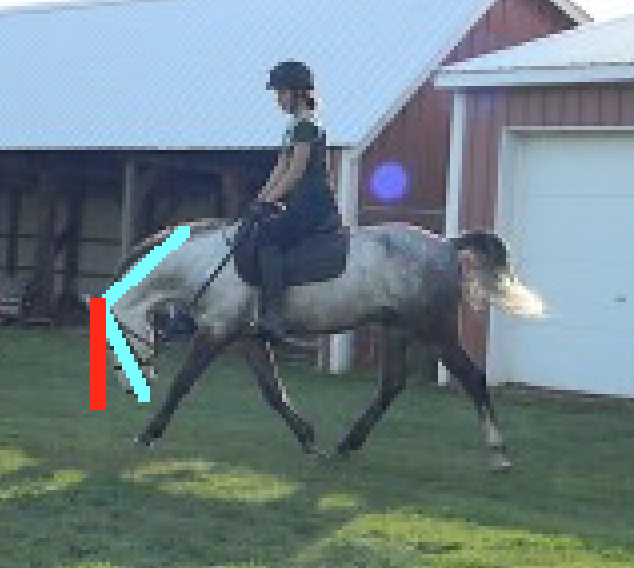
Neither of these horses are truly behind the vertical for our purposes, although many will mistakenly call them so. They have a greater than 90 degree angle at the poll, and an open throatlatch.
And most importantly, they are lifted at the base of their necks, and connected over the back, which is what makes for a good, gymnastic stretch for the horse. More on that subject here.
Another way that you can correctly judge a horse that is in a low neck position (that might work better for some), is to mentally bring their head and neck up so that the their poll is the highest point - keeping the angle at the poll or throatlatch the same. In other words, if you are looking at a horse that is in a low stretching frame, and you are wondering if that horse is actually behind the vertical or not - bring that horse's neck back up to a working height in your mind, and that will give you a true perspective of if that horse is actually overbent and behind the vertical or not.
Now, here is a horse that is actually behind the vertical in a low neck, and is quite obviously being cranked into this position with the reins: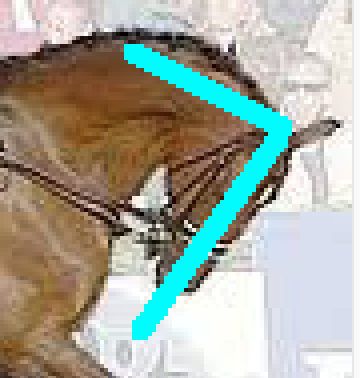
This horse is not stretching, he is being ridden in Rolkur.
I found it surprisingly hard to find any photos of horses that are actually behind the vertical when stretching. If you have any, please share. And add your comments or questions! I know this can be a confusing topic for many.






